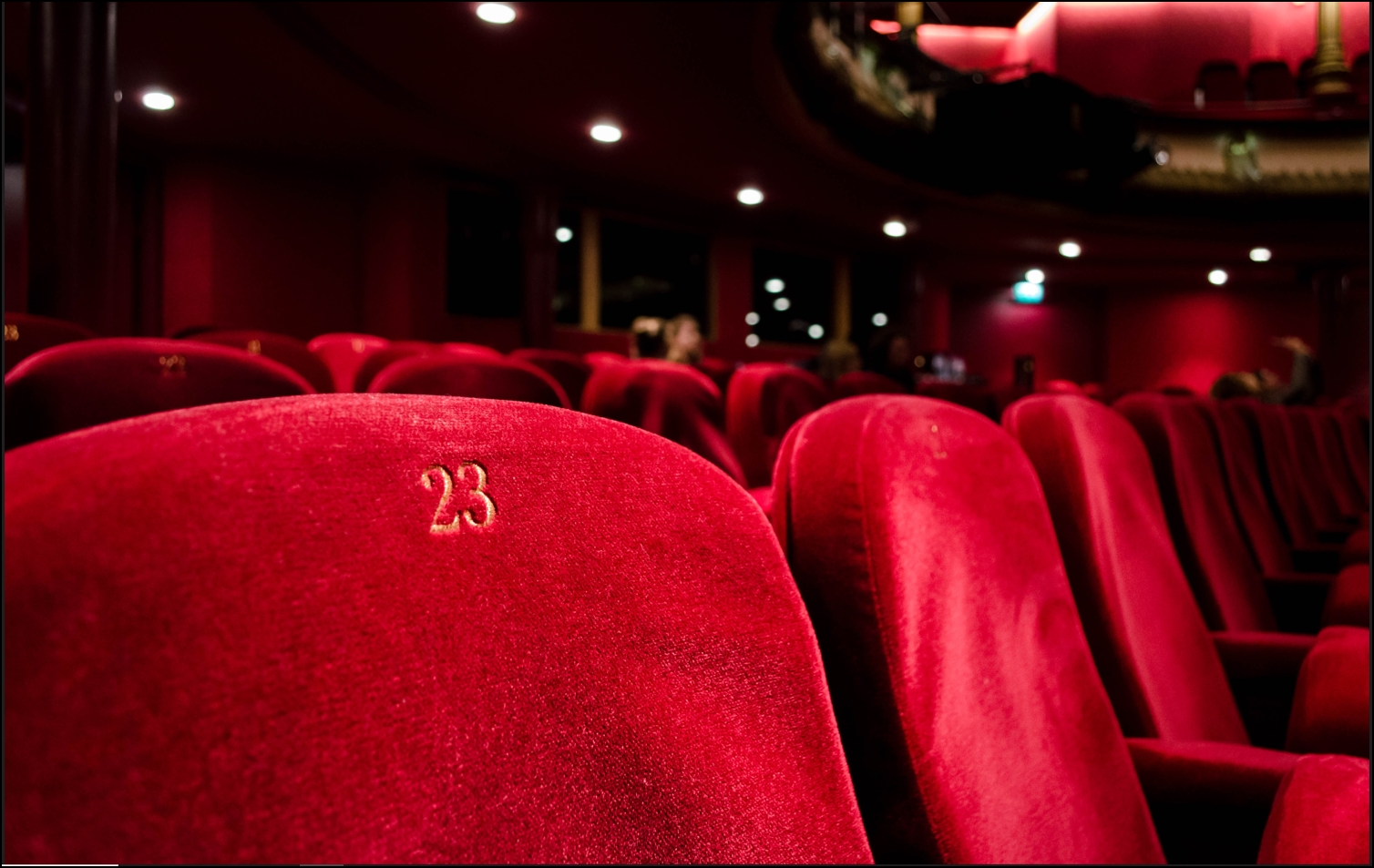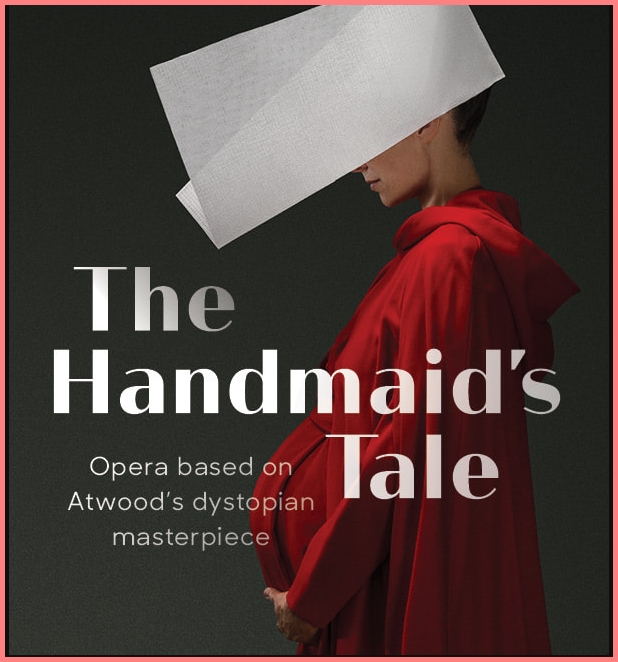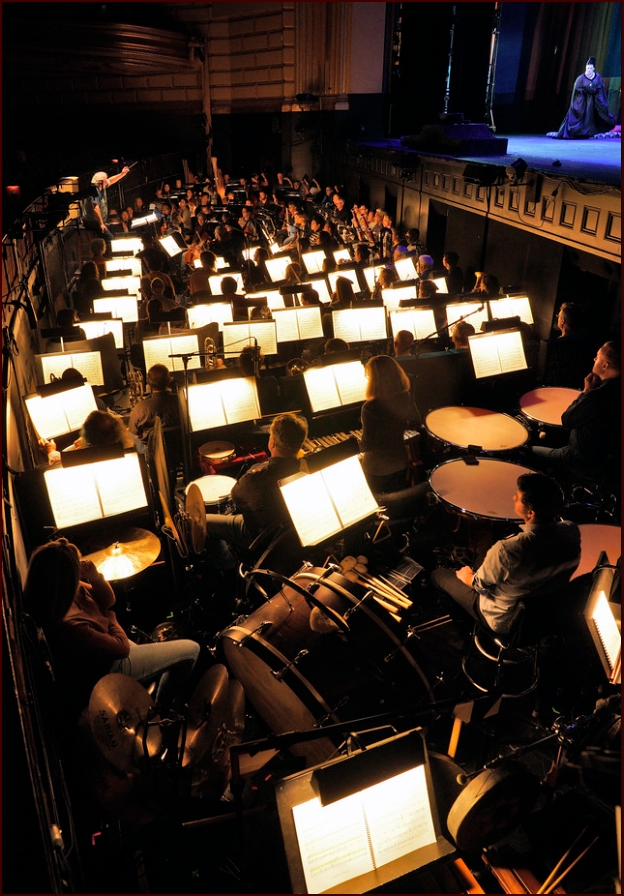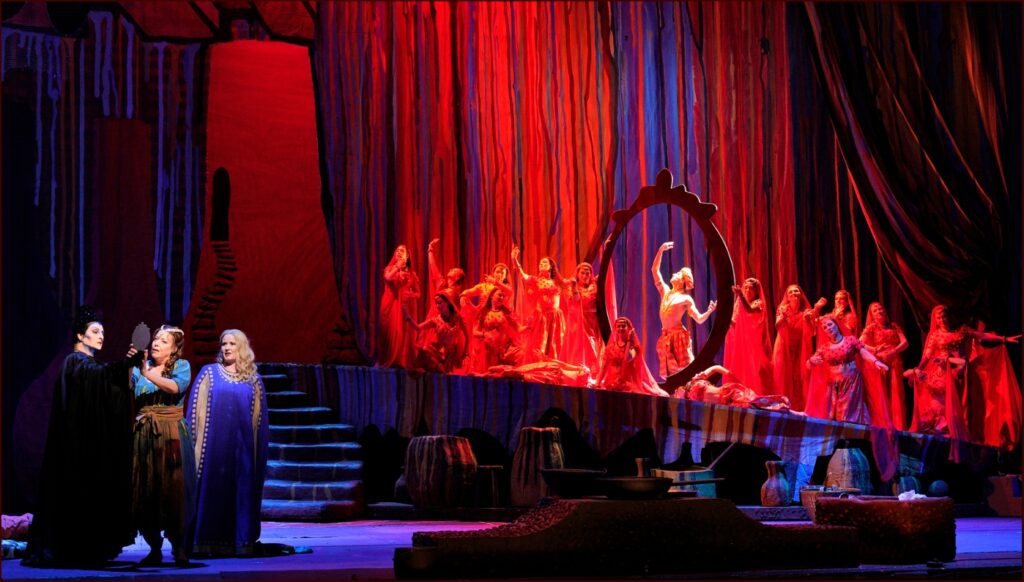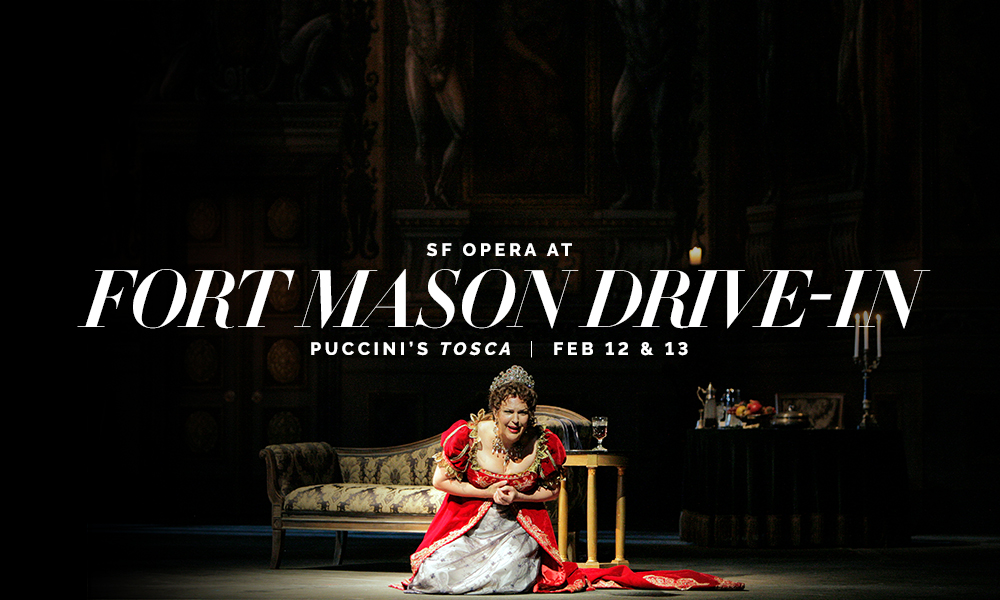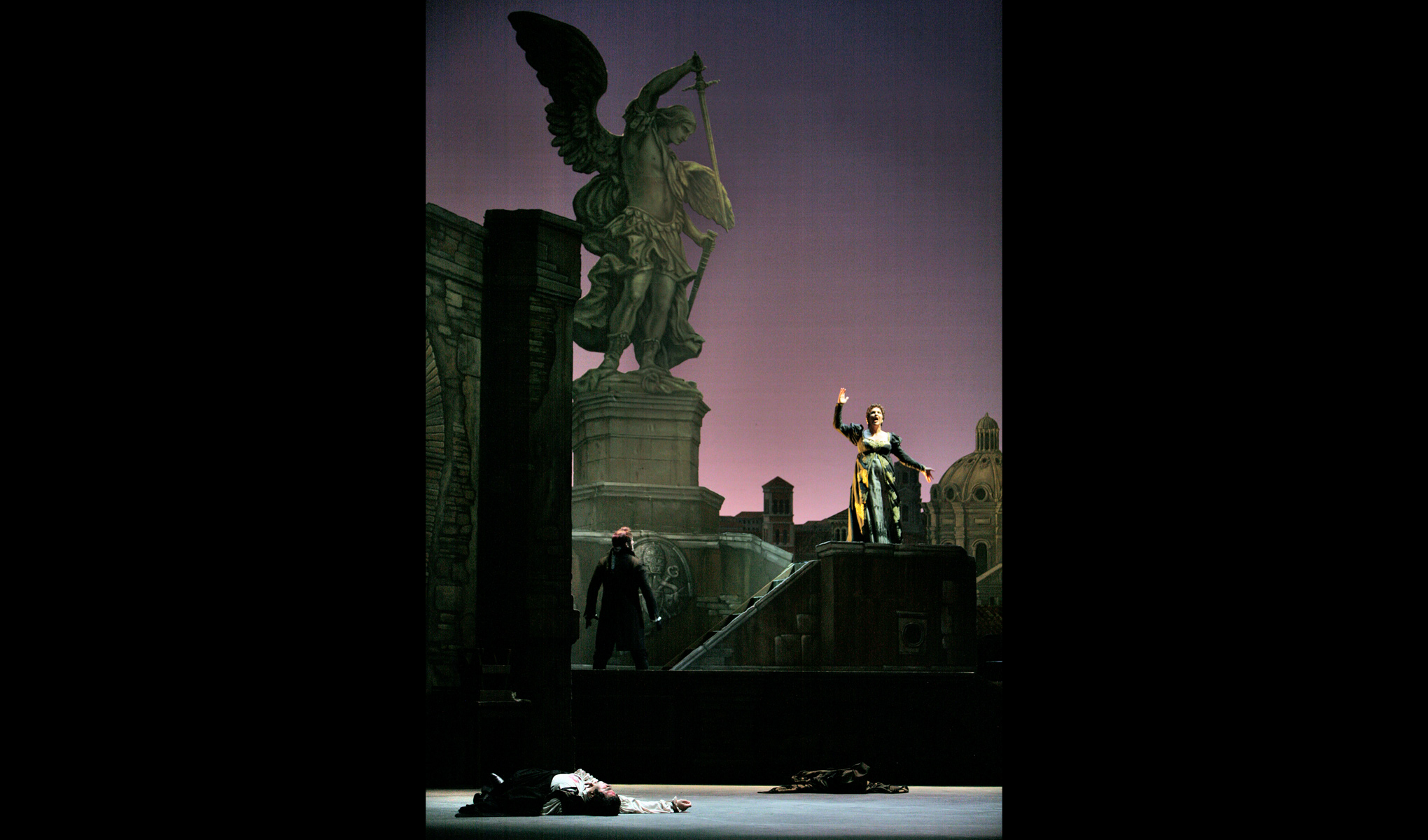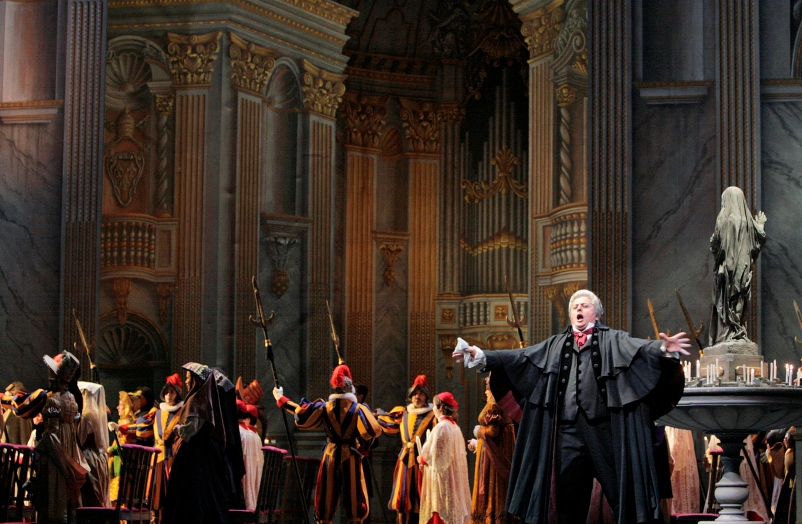by Jeff Dunn
If you’re in the mood for a well-done dose of despondency, Poul Ruder’s The Handmaid’s Tale, now playing at the San Francisco Opera, is just the ticket. Prepare with a quick re-read of 1984 and Animal Farm. Then, you’ll be ready to show up and experience an impressive array of artists doing their very best to show you some of the very worst that could happen to this country.
Margaret Atwood’s 1985 novel posits a future (2014 in the book, 2030 in the current opera production) where a worldwide infertility disease, environmental degradations, and nuclear disasters have created enough social instability to allow a puritanical cult to mastermind a coup of the U.S. government. As a result, a “Republic of Gilead” is created and put under martial law.
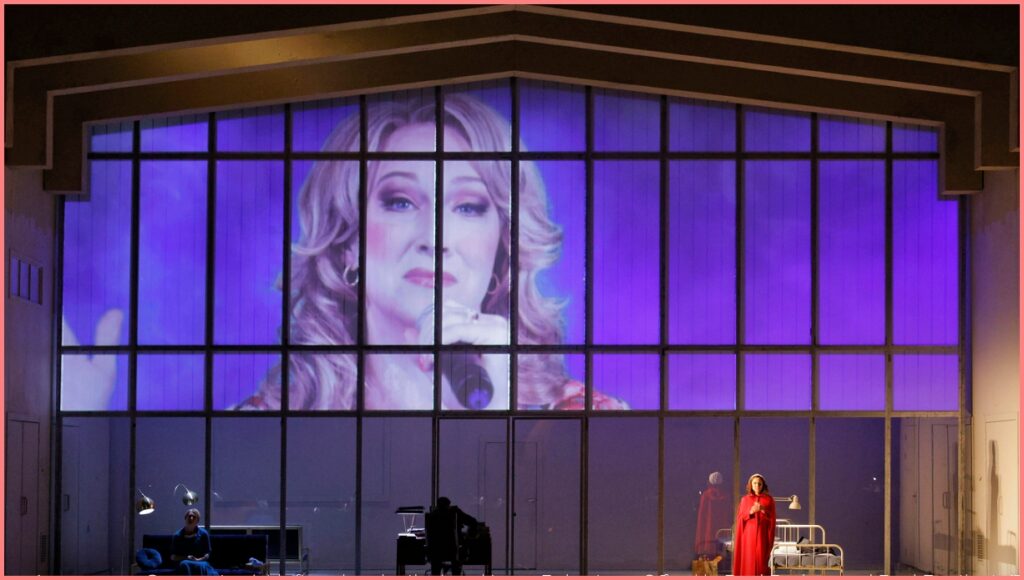
Next, claiming that infertility is God’s punishment for women’s sinfulness, women are progressively deprived of most of their rights, including reading and writing, and forcibly separated into classes depending on their ability to procreate and other factors. Fertile women are designated as “Handmaids,” forced to have intercourse with upper-class men whose wives have been unable to produce children — and then forced to surrender their babies.
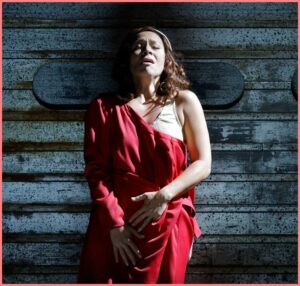
Ruder’s music is utterly appropriate to this dismal situation. Written from 1996 to 1998 in a late Modernist orchestral style, with drone bass lines, accretionary tone clusters, and periodic fusillades from the brass. Vocal lines are relatively simple in comparison, but nothing you’d want to sing in the shower.
A cultural icon of melody (“Indian’s Farewell,” now known as “Amazing Grace”) can be detected in several instances, where it adds a bitter irony to the cult’s pseudoreligion. For some, the music may become as hard to bear as the gross indignities and devasting losses suffered by the opera’s characters.
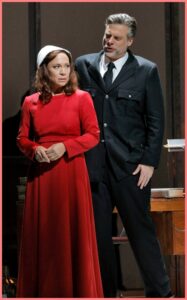
Photo: Cory Weaver.
Mezzo-soprano Irene Roberts portrays the central Handmaid sufferer “Offred.” In such a production I cannot imagine a better performance than the way she passes on her anguish, travails, failing hopes, and powerlessness to listeners. Bass John Relyea adds a rich sound and complexity to the bad-guy role of Offred’s Commander and would-be impregnator.
Mezzo-soprano Lindsay Ammann adds a special poignancy to her portrayal of the Commander’s jealous wife. Soprano Rhoslyn Jones’ sweetness is a welcome contribution to her part as Offred’s shopping partner Ofglen. And soprano Sarah Cambidge’s fearful stridency is perfect in her projection of how, given a little power, oppressed women are happy to subjugate other women.
Conductor Karen Kamensek carefully handled the score’s complexities and did not stint at providing a full dynamic range of occasionally terrifying sounds. Chloe Lamford’s sets were spare and utilitarian in foreground, but massive where needed in portraying the huge “Hanging Wall” where traitors’ bodies remind viewers of the cost of cult disobedience. Will Duke’s large projections were especially apt in personalizing the loss of Offred’s pre-coup daughter.
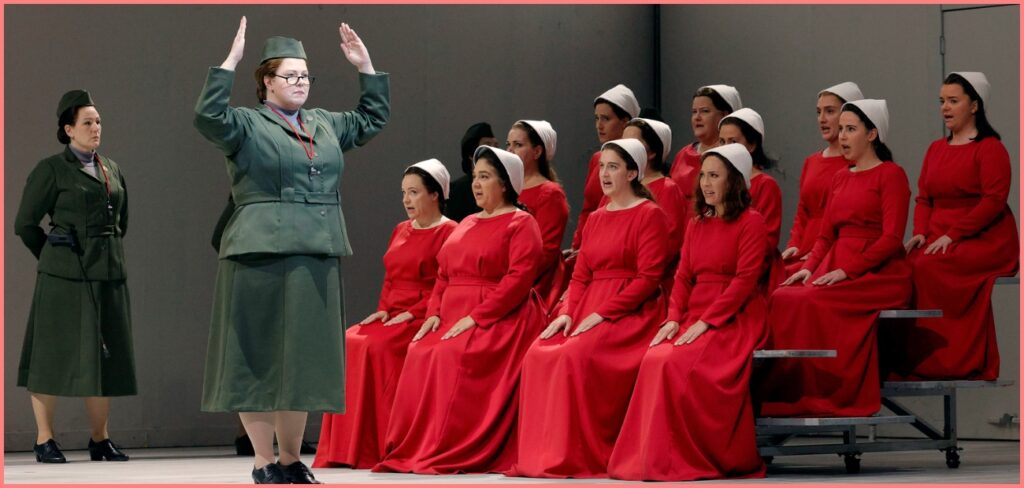
The Handmaid’s Tale serves as a very unpleasant object lesson on the perversion of authority and psychology. San Francisco Opera’s production is true to Atwood’s vision. Fortunately, since the United States is still a free country, attendance is optional.
-30-
 ASR’s Classical Music Section Editor Jeff Dunn is a retired educator and project manager who’s been writing music and theater reviews for Bay Area and national journals since 1995. He is a member of the San Francisco Bay Area Theatre Critics Circle and the National Association of Composers, USA. His musical Castle Happy (co-author John Freed), about Marion Davies and W.R. Hearst, received a festival production at the Altarena Theater in 2017. His opera, Finding Medusa, with librettist Madeline Puccioni, was completed in January 2023. Jeff has won prizes for his photography, and is also a judge for the Northern California Council of Camera Clubs.
ASR’s Classical Music Section Editor Jeff Dunn is a retired educator and project manager who’s been writing music and theater reviews for Bay Area and national journals since 1995. He is a member of the San Francisco Bay Area Theatre Critics Circle and the National Association of Composers, USA. His musical Castle Happy (co-author John Freed), about Marion Davies and W.R. Hearst, received a festival production at the Altarena Theater in 2017. His opera, Finding Medusa, with librettist Madeline Puccioni, was completed in January 2023. Jeff has won prizes for his photography, and is also a judge for the Northern California Council of Camera Clubs.
| Production | A Handmaid's Tale |
|---|---|
| Based on novel by | Margaret Atwood |
| Libretto by | Paul Bentley |
| Stage Direction | John Fulljames |
| Producing Company | San Francisco Opera |
| Production Dates | Thru Oct 1st, 2024 |
| Production Address | 301 Van Ness Ave, SF, CA |
| Website | www.sfopera.com |
| Telephone | (415) 392-4400 |
| Tickets | $28-$426 |
| Reviewer Score | Max in each category is 5/5 |
| Overall | 3.75/5 |
| Performance | 4/5 |
| Music | 3/5 |
| Libretto | 4/5 |
| Stagecraft | 4/5 |
| Aisle Seat Review PICK? | No. |
** Editor — thanks to https://kglteater.dk
